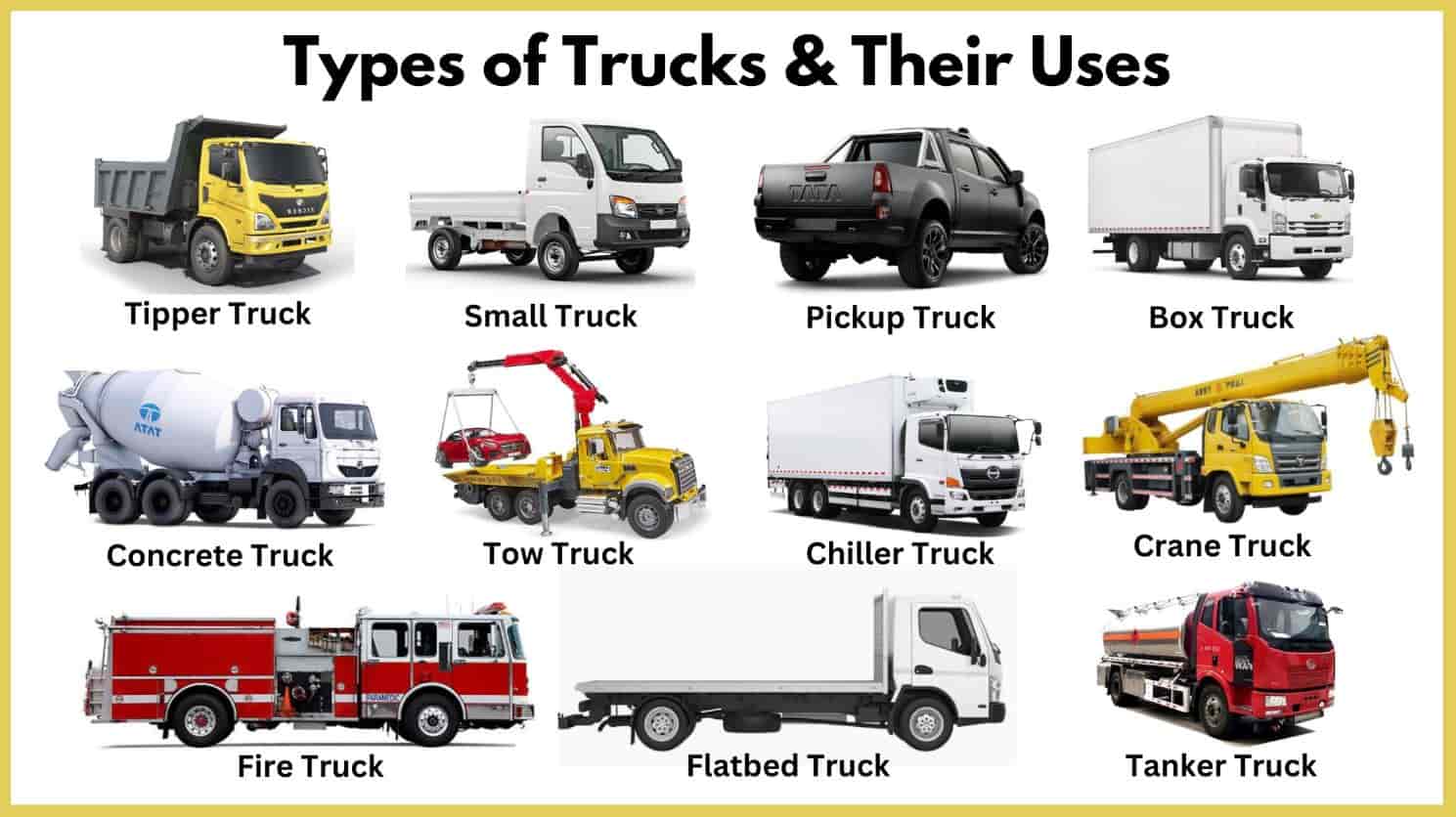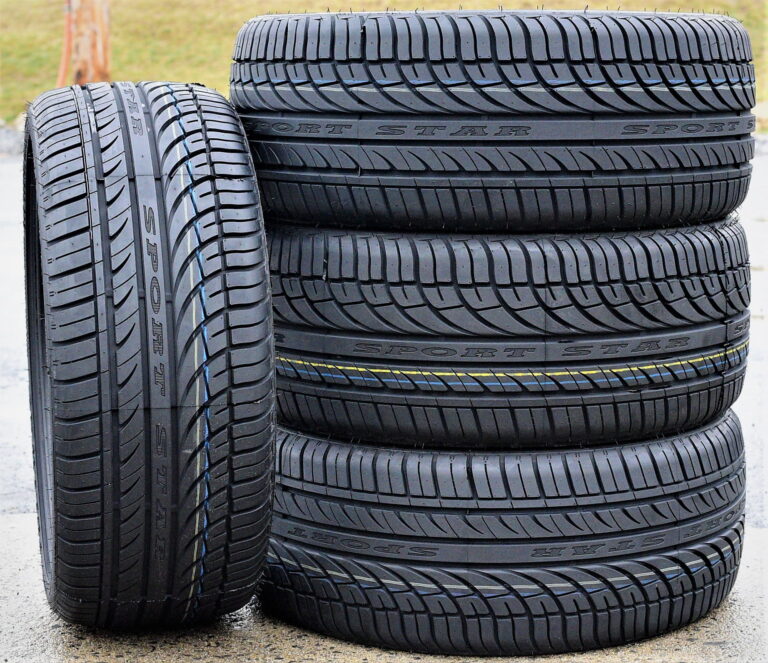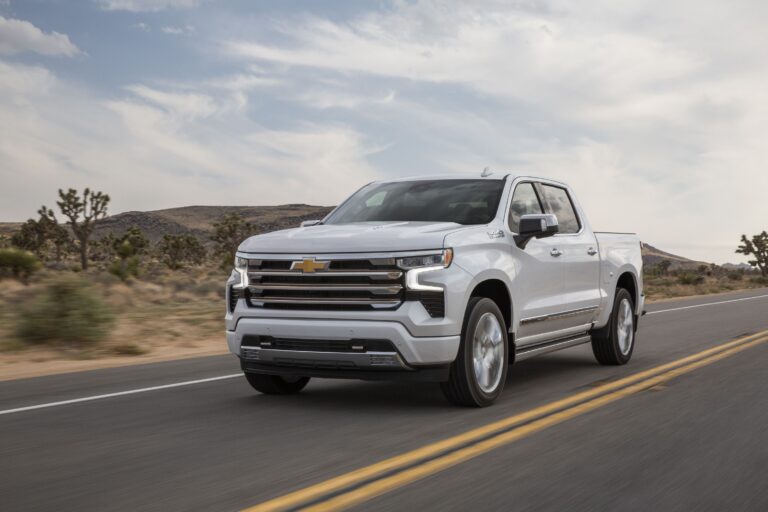Truck Cap Dimension Chart: Your Ultimate Guide to a Perfect Fit
Truck Cap Dimension Chart: Your Ultimate Guide to a Perfect Fit cars.truckstrend.com
Introduction: Precision Matters in Truck Cap Selection
For many truck owners, a truck cap – often referred to as a truck shell, topper, or camper shell – is an indispensable accessory. It transforms the open bed of a pickup into a secure, weather-protected, and often more organized cargo area. Whether you’re a tradesperson needing to secure tools, an outdoor enthusiast hauling camping gear, or simply looking to enhance your truck’s utility and aesthetics, a well-chosen truck cap can significantly elevate your vehicle’s functionality.
Truck Cap Dimension Chart: Your Ultimate Guide to a Perfect Fit
However, selecting the right truck cap is far from a one-size-fits-all endeavor. The success of your investment hinges entirely on one critical factor: dimensions. A cap that doesn’t precisely match your truck’s bed dimensions will lead to a host of problems, from ill-fitting gaps and potential leaks to compromised security and an unappealing appearance. This is where the Truck Cap Dimension Chart becomes your invaluable ally.
This comprehensive guide will delve deep into the world of truck cap dimensions, explaining why they are paramount, how to accurately measure your truck, how to interpret manufacturer charts, and what other crucial considerations come into play. By the end, you’ll be equipped with the knowledge to confidently navigate the selection process, ensuring your truck cap fits like a glove and serves its purpose flawlessly.
Understanding the Basics: Why Dimensions Matter for Your Truck Cap
Imagine buying a custom-tailored suit without providing your measurements – the outcome would be disastrous. The same principle applies to truck caps. Each truck model, and even different configurations within the same model year (e.g., short bed vs. long bed, different cab styles), possesses unique bed dimensions. A mismatch can result in:
- Poor Fit and Gaps: Gaps between the cap and the bed rails allow water, dust, and debris to enter, defeating the purpose of weather protection.
- Compromised Security: An improperly seated cap can be easier to pry open or may not seal properly, leaving your cargo vulnerable.
- Aesthetic Discrepancies: A cap that’s too short, too long, too wide, or doesn’t align with your cab’s height will look awkward and diminish your truck’s appearance.
- Installation Difficulties: Forcing an ill-fitting cap can damage both the cap and your truck’s bed rails.
- Wasted Investment: A cap that doesn’t fit correctly is a cap you won’t be happy with, potentially leading to costly returns or the need for a new purchase.
.jpg/580px-Freightliner_M2_106_6x4_2014_(14240376744).jpg)
To avoid these pitfalls, understanding and accurately measuring the key dimensions of your truck bed is non-negotiable.
How to Measure Your Truck Bed for a Cap: A Step-by-Step Guide

Before consulting any dimension chart, you need to know your truck’s specific measurements. Precision is key here. Always use a reliable tape measure (preferably a metal one for accuracy) and double-check your measurements. Enlisting a second person can also help ensure accuracy, especially for longer measurements.
Here are the crucial dimensions you’ll need:
-
Bed Length (Inside Measurement):

- How to Measure: Measure from the inside of the bulkhead (the wall closest to the cab) straight back to the inside of the closed tailgate. Measure along the top edge of the bed rails, not the floor.
- Important Note: Truck bed lengths are often advertised in rounded figures (e.g., 5.5 ft, 6.5 ft, 8 ft). Your actual measurement might be slightly off (e.g., 65.5 inches instead of 66 inches for a 5.5 ft bed). This is normal. Manufacturers design caps to fit these nominal sizes.
- Common Sizes: Short Bed (typically 5.5 to 5.8 feet), Standard Bed (typically 6.5 to 6.8 feet), Long Bed (typically 8 feet).
-
Bed Width (Inside Rail to Inside Rail):
- How to Measure: Measure the width of the truck bed from the inside edge of one bed rail to the inside edge of the opposite bed rail. It’s advisable to take this measurement at a few points along the bed (e.g., near the cab, in the middle, and near the tailgate) as some beds might taper slightly. Most caps are designed for a consistent width, but confirming helps.
- Important Note: The cap will sit on top of the bed rails, so the critical width is the distance between the rails at the top edge.
-
Cab Height (for Cab-High Caps):
- How to Measure: This measurement is crucial if you want a cap that is flush with your truck’s cab roof for a streamlined look. Measure from the top of the bed rail straight up to the highest point of your truck’s cab roof.
- Considerations: Account for any roof racks or antennas on your cab that might interfere. Some caps are designed to sit slightly above the cab, while others are precisely flush.
-
Tailgate Clearance:
- How to Measure: Measure from the top of the bed rail down to the top edge of the closed tailgate. This measurement ensures that the cap’s rear door or frame clears the tailgate without obstruction. Most caps are designed with sufficient clearance, but it’s a good double-check, especially if you have an aftermarket tailgate protector.
Decoding the Truck Cap Dimension Chart: What to Look For
Once you have your truck’s precise measurements, you’re ready to consult manufacturer-provided truck cap dimension charts. These charts are typically found on the manufacturer’s website (e.g., Leer, ARE, Snugtop), or you can ask your local truck cap dealer for access to their fitment guides.
A typical Truck Cap Dimension Chart will organize information by:
- Truck Make: Ford, Chevrolet, Ram, Toyota, Nissan, GMC, Honda.
- Truck Model: F-150, Silverado, Ram 1500, Tacoma, Frontier, Sierra, Ridgeline.
- Model Year Range: Crucial as bed dimensions can change significantly between generations of the same truck model.
- Cab Style: Regular Cab, Extended Cab (SuperCab, Double Cab, Quad Cab), Crew Cab (SuperCrew, CrewMax). While cab style doesn’t directly affect bed dimensions, it’s often used to identify specific truck configurations.
- Bed Length (Nominal): This will be listed as 5.5′, 6.5′, 8′, etc., corresponding to the common bed sizes.
- Compatible Cap Series/Models: The chart will list which specific cap models (e.g., Leer 100R, ARE CX Series, Snugtop Rebel) are designed to fit that particular truck bed.
Example of a Simplified Truck Cap Dimension Chart (Conceptual):
| Truck Make | Truck Model | Model Year Range | Cab Style | Bed Length (Nominal) | Compatible Cap Series/Models | Notes/Key Features |
|---|---|---|---|---|---|---|
| Ford | F-150 | 2015-Present | SuperCrew | 5.5 ft | Leer 100R, ARE CX, Snugtop Rebel | Cab-high, fiberglass, available with options |
| Ford | F-150 | 2015-Present | SuperCab/Crew | 6.5 ft | Leer 100XL, ARE Z, Snugtop XTR | Mid-rise, excellent for cargo, aerodynamic |
| Ford | F-150 | 2015-Present | Regular/Super | 8.0 ft | Leer 100RCC, ARE DCU | Commercial grade, high-rise, aluminum or fiberglass |
| Chevrolet | Silverado | 2019-Present | Crew Cab | 5.8 ft | Leer 100XR, ARE MX, Snugtop Outback | Cab-high, side access windows, robust design |
| Chevrolet | Silverado | 2019-Present | Double Cab | 6.6 ft | Leer 100Q, ARE V, Snugtop Cab-Hi | Streamlined, good for general use |
| Toyota | Tacoma | 2016-Present | Double Cab | 5.0 ft | Leer 180, ARE LSII, Snugtop Sport | Mid-rise, popular for camping/recreation |
| Toyota | Tacoma | 2016-Present | Access Cab | 6.0 ft | Leer 100R, ARE CX, Snugtop Rebel | Classic cab-high, secure |
Note on "Price" in the Table: A "Truck Cap Dimension Chart" itself doesn’t have a price. The chart is a guide for fitment. The price is associated with the specific truck cap model you choose from the compatible list. Truck cap prices vary widely based on material (fiberglass, aluminum), features (windows, lighting, carpeted interior, roof racks, remote locking), and brand.
Estimated Price Ranges for Truck Caps (General):
- Entry-Level Aluminum Caps: $1,500 – $2,500
- Mid-Range Fiberglass Caps (Cab-High/Mid-Rise): $2,500 – $4,000
- High-End Fiberglass Caps (Premium Features, High-Rise): $4,000 – $6,000+
- Commercial/Heavy-Duty Caps: $3,000 – $7,000+
These are general estimates and do not include installation fees, shipping, or additional accessories. The dimensions themselves only indirectly affect price; larger caps (e.g., 8-foot beds) will generally cost more than shorter ones simply due to more material used.
Types of Truck Caps and Their Dimensional Considerations
Beyond the basic fit, different cap styles offer varying levels of utility and have distinct dimensional implications:
- Cab-High Caps: These are designed to be flush with the top of your truck’s cab, offering a sleek, integrated look. Your "Cab Height" measurement is paramount here. They provide a streamlined profile, often improving aerodynamics slightly.
- Mid-Rise Caps: Slightly taller than the cab, these caps offer increased interior cargo volume without significantly impacting the truck’s overall height or appearance. They are a popular compromise between cab-high and high-rise models.
- High-Rise/Walk-In Caps: These caps are significantly taller than the truck’s cab, maximizing vertical cargo space. They are ideal for commercial users needing to stand inside or haul large, bulky items. Interior height dimensions become critical here. Their height will affect garage clearance.
- Wedge Caps: These caps start lower at the cab and rise towards the rear, offering a distinctive look and increased rear cargo volume.
- Commercial/Utility Caps: Often aluminum, these are built for durability and functionality, frequently featuring side access doors, shelving, and heavy-duty roof racks. Their dimensions are optimized for utility rather than aesthetics, focusing on maximum usable space.
Important Considerations Beyond Basic Dimensions
While bed length, width, and cab height are primary, several other factors can influence the perfect fit and functionality of your truck cap:
- Bed Liners and Rail Caps: Aftermarket drop-in bed liners or rail caps can slightly alter the effective inside width or the thickness of your bed rails. While usually minor, it’s worth mentioning to your dealer, as some caps might require minor adjustments or different clamping systems. Spray-in liners generally do not affect fit.
- Tailgate Protectors: If you have an aftermarket tailgate protector that adds significant thickness to the top of your tailgate, double-check that the cap’s rear door will clear it when opening and closing.
- Toolboxes or Storage Systems: If you have a toolbox or other storage system installed in your truck bed, ensure it doesn’t interfere with the cap’s installation or interior space. Some caps are designed with specific cutouts or configurations for bed-mounted toolboxes.
- Truck Bed Lights/Accessories: Ensure any factory or aftermarket bed lights, power outlets, or cargo management systems will remain accessible and functional once the cap is installed.
- Load-Bearing Capacity (Roof): While not a dimension, consider what you plan to put on top of the cap (e.g., roof rack, kayaks, ladders). Ensure the cap’s structural integrity and mounting points can handle the weight.
- Installation Method: Most caps are clamped onto the bed rails, making installation relatively straightforward. Some commercial caps may be bolted for added security.
- Weather Sealing: A good cap should come with robust weather stripping to create a tight seal. Even with perfect dimensions, poor sealing can lead to leaks.
Challenges and Solutions in Dimension Matching
Even with careful measurements, you might encounter minor discrepancies or unique situations:
- Aftermarket Truck Modifications: Lift kits or oversized tires won’t affect the cap’s fit on the bed, but they will impact the truck’s overall height, which is important for garage clearance, especially with high-rise caps.
- Older or Rare Trucks: Finding exact dimension charts for very old or less common truck models can be challenging. In such cases, a specialized dealer might be able to cross-reference or even recommend custom solutions.
- Slight Measurement Variations: Don’t panic if your tape measure shows your 6.5-foot bed is actually 78.5 inches (6.54 ft) instead of a perfect 78 inches. Manufacturers build in tolerances. The nominal bed length (e.g., 5.5 ft, 6.5 ft, 8 ft) is usually the key identifier. If in doubt, consult the manufacturer or a trusted dealer.
- Universal vs. Custom Fit: While some "universal" caps exist, they rarely offer the seamless fit and weather protection of a custom-designed cap specific to your truck’s make, model, and year. Always opt for a custom-fit cap when possible.
Practical Advice and Actionable Insights
- Measure Thrice, Buy Once: Seriously. Take your measurements carefully, write them down, and then measure again. Have a friend verify them.
- Always Consult the Manufacturer’s Chart: Do not rely on generic online information or word-of-mouth. Go directly to the cap manufacturer’s website or ask your dealer for the precise fitment chart for your truck’s exact year, make, and model.
- Consider Your Future Needs: Think about what you’ll be hauling. If you anticipate needing extra vertical space later, a mid-rise or high-rise might be a better investment than a cab-high, even if it’s not your initial preference.
- Don’t Rush the Decision: Truck caps are a significant investment. Take your time, compare options, and ensure you’re confident in your measurements and selection.
- Work with a Reputable Dealer: Experienced truck cap dealers have access to comprehensive fitment charts, can offer professional measurement services, and provide expert advice on installation and accessories. They can also help troubleshoot any measurement discrepancies.
Frequently Asked Questions (FAQ) About Truck Cap Dimensions
Q1: Can I use a truck cap from a different make or model of truck on my vehicle?
A1: Generally, no. Truck beds, even those that appear similar, have unique dimensions (length, width, rail contours, tailgate clearance) that are specific to each make, model, and often year range. A cap designed for one truck will almost certainly not fit another perfectly, leading to gaps, leaks, and potential damage.
Q2: How do I know if my truck bed is a "short bed" or "long bed"?
A2: "Short bed," "standard bed," and "long bed" are common classifications. Typically, a short bed is around 5.5 feet (66 inches), a standard bed is about 6.5 feet (78 inches), and a long bed is 8 feet (96 inches). Measure your bed length as described in the guide to confirm your exact size.
Q3: Do bed liners or bed rail protectors affect the truck cap’s fit?
A3: Sometimes, but usually minimally. Spray-in bed liners generally do not affect the fit. Drop-in plastic bed liners or aftermarket bed rail caps can add a slight thickness that might affect how the cap sits or how the clamps attach. It’s best to mention any existing liners or protectors to your truck cap dealer so they can advise on compatibility or necessary adjustments.
Q4: What if my measurements don’t exactly match the dimensions on the chart?
A4: Slight variations (e.g., an inch or less) are common due to measuring techniques or manufacturing tolerances. Truck cap manufacturers design their products to fit the nominal bed sizes (e.g., 5.5 ft, 6.5 ft). If your measurement is very close to a standard size, it’s likely the correct fit. If you have significant discrepancies or are unsure, always contact the truck cap manufacturer or a reputable dealer with your exact truck information and measurements for verification.
Q5: Is it possible to get a custom-sized truck cap?
A5: While standard truck caps are mass-produced to fit common truck models, some manufacturers or custom fabricators might offer bespoke solutions. However, these are significantly more expensive and have longer lead times than off-the-shelf options. It’s usually only considered for very rare or highly modified trucks.
Q6: How much does a truck cap typically cost?
A6: The price of a truck cap varies widely based on material (aluminum vs. fiberglass), style (cab-high, mid-rise, high-rise, commercial), features (windows, lighting, interior finish, roof racks, remote locks), and brand. Generally, you can expect to pay anywhere from $1,500 for a basic aluminum cap to $6,000+ for a fully-optioned fiberglass or commercial cap, not including installation.
Conclusion: The Foundation of a Functional Truck
The Truck Cap Dimension Chart is more than just a table of numbers; it’s the foundational tool for ensuring your truck cap is a perfect, seamless extension of your vehicle. By meticulously measuring your truck bed and diligently cross-referencing those measurements with manufacturer-specific dimension charts, you eliminate the guesswork and mitigate the risks associated with an ill-fitting purchase.
A perfectly fitted truck cap not only enhances your truck’s utility by providing secure, weather-protected storage but also contributes significantly to its aesthetic appeal and resale value. Embrace the precision, utilize the dimension charts, and invest in a cap that truly complements your truck and serves your needs for years to come. Your truck – and your cargo – will thank you for it.



